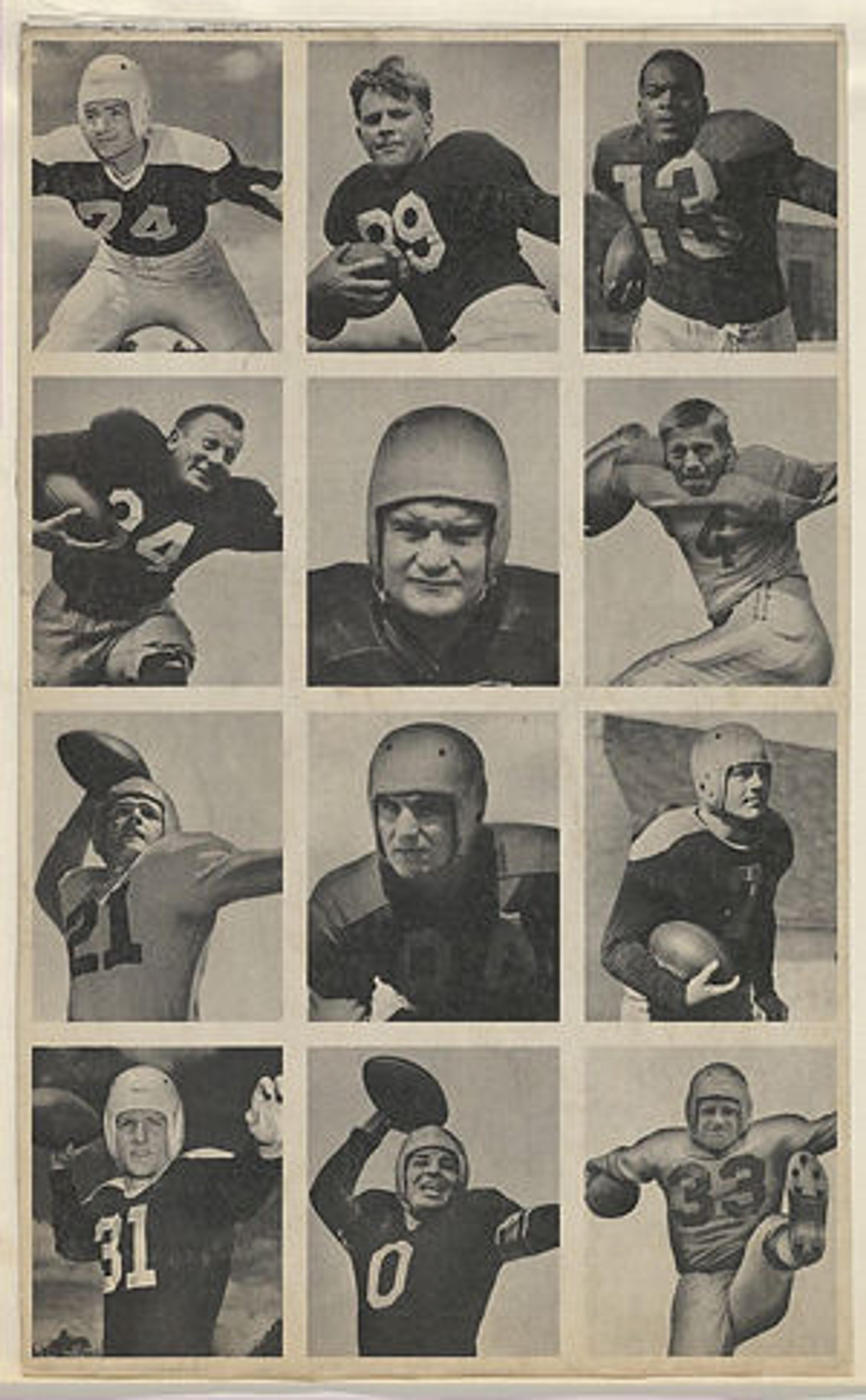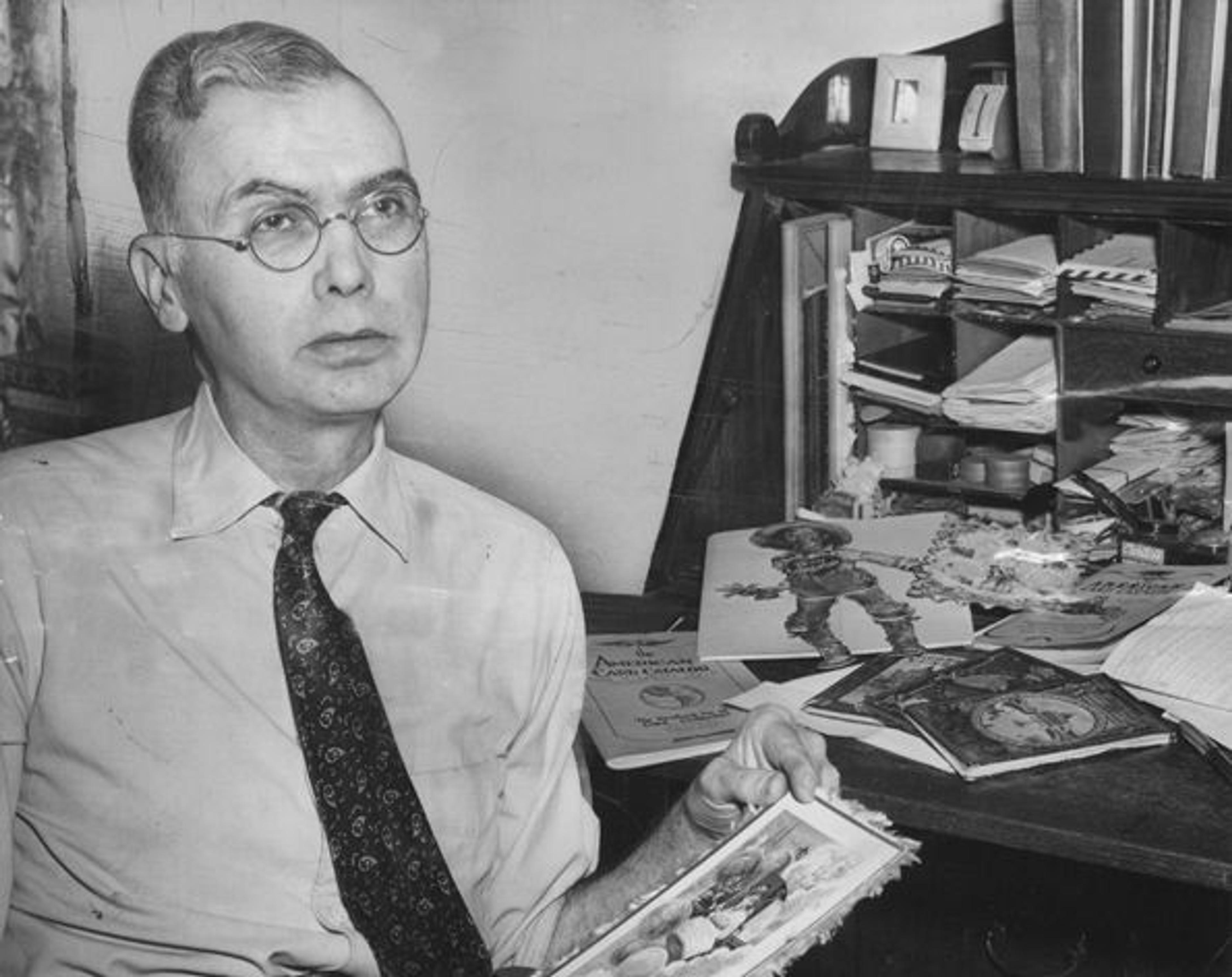Spectrum Spotlight: Freyda Spira


«Brought to you by the Spectrum group, which encourages post-college audiences to experience the Met in new and unexpected ways, this post is the second installment of our new "Spectrum Spotlight" series—bringing you closer to the Met and introducing some of the staff members that make the Museum such a special place. Look for more posts throughout the year, and, of course, please attend Spectrum events!»
Freyda Spira, assistant curator in the Met's Department of Drawings and Prints, recently spoke with us about Gridiron Greats, a new installation of vintage football cards on view through February 10.
Spectrum: Tell us a little bit about the cards on view, and what are some of the outstanding highlights visitors should look out for?
Freyda Spira: As a way to celebrate the Super Bowl's first appearance in New York, the Museum has put together a pop-up exhibition demonstrating the depth and diversity of its collections. This exhibition includes the earliest football card series, dating from 1894, that highlights players from the Ivy League's Yale, Harvard, and Princeton teams. The "Galloping Ghost," Red Grange, and the legendary Jim Thorpe appear in the 1933 Goudey Gum set known as the Sport Kings. Also on view are the Leaf Gum and Bowman sets from 1948, which were the first cards produced after World War II and usher in the modern era of football cards. The latest set shown is Bazooka's first football issue from 1959 that includes Johnny Unitas and Ollie Matson, among others.

Spectrum: Gridiron Greats features a football card of Kenny Washington. What is his significance in professional football?
Freyda Spira: Washington's rookie card is included in the 1948 Bowman set created just after the end of the war. Washington is often cited as the first African American to be signed to a professional football team; he was, in fact, the first black player to sign with a National Football League team—the Los Angeles Rams, in 1946. Earlier that year, however, the Cleveland Browns of the All-American Football Conference signed Bill Willis and Marion Motely, whose 1950 Bowman card is also on view in the exhibition. Washington was an All-American tailback who played college ball at the University of California, Los Angeles, with none other than Jackie Robinson, who went on to break the color barrier in Major League Baseball in 1947.
Left: Sheet of 12 uncut football cards, from the Bowman Football series (R407-1), 1948. Issued by Bowman Gum Company. The Metropolitan Museum of Art, New York, The Jefferson R. Burdick Collection, Gift of Jefferson R. Burdick (Burdick 327, R407-1.2)
Spectrum: The card collection at the Met was given to the Museum by Jefferson R. Burdick. What can you tell us about him?
Freyda Spira: Born at the turn of the century, Burdick created the definition of the modern collector, simultaneously devising the cataloguing system still used today by collectors of American trade cards. Plagued by arthritis, Burdick lived his life as an unassuming bachelor while amassing an enormous collection of printed ephemera, or printed matter, that was not meant to have lasting value. His collection of over 300,000 trade cards, postcards, and greeting cards was given to the Museum in the early 1950s; it contains all types of sports cards, among many other things, and is the largest collection of baseball cards outside of the Hall of Fame in Cooperstown, New York. Burdick wrote in 1960 that a card collection is "a magic carpet that takes you away from work-a-day cares to havens of relaxing quietude, where you can relive the pleasures and adventures of a past day—brought to life in vivid picture and prose."
Spectrum: The cards in the Met's collection seem to be a marriage of high art and popular culture. What role do you think these play in the encyclopedic collection of the Met?
Freyda Spira: Burdick's collection fulfills the mission set out by the founding curator of the Department of Drawings and Prints, William Ivins, who understood that a truly encyclopedic collection throws open the gamut of human life and endeavor, and should be like the library of a professor of great literature; that is, composed of a corpus of works in themselves distinctly works of art—filled out and illustrated by many other objects that have only technical, historical, social, or religious importance.

Photo of Jefferson R. Burdick, 1955. Courtesy of the Syracuse Post-Standard
Spectrum: Do people ever contact the Museum to donate their collections of cards?
Freyda Spira: I get calls all the time from people who have collections they have either unearthed in their great-uncle's attic or that they have lovingly put together over a lifetime, much in the same way as Burdick. There are many collectors who, like Burdick, view their collections in terms of their cultural value. The ephemera collection within the Department of Drawing and Prints is still growing: In the past couple of years, the Museum has been given collections of baseball cards that will perfectly complement Burdick's in time, and very recently a generous gift of early American greeting cards was donated. If anyone is interested in donating their collections—please give me a call!
Banner images (left to right): Jim Thorpe, Football, 1933. Goudey Gum Company (American, Boston, Massachusetts). The Metropolitan Museum of Art, New York, The Jefferson R. Burdick Collection, Gift of Jefferson R. Burdick (Burdick 326, R338.7); Kenny Washington, from the All-Star Football series (R401-2), 1948. Issued by Leaf Gum Company, Chicago, IL. The Metropolitan Museum of Art, New York, The Jefferson R. Burdick Collection, Gift of Jefferson R. Burdick (Burdick 326, R401-2.19); Harold "Red" Grange, Football, 1933. Goudey Gum Company (American, Boston, Massachusetts). The Metropolitan Museum of Art, New York, The Jefferson R. Burdick Collection, Gift of Jefferson R. Burdick (Burdick 326, R338.5)
Photo of Freyda Spira by Jackie Neale Chadwick
Related Link
Highlights of Gridiron Greats: Vintage Football Cards in the Collection of Jefferson R. Burdick
Lucy Redoglia
Lucy Redoglia was formerly the associate online community producer in the Digital Media Department.
Christopher undefined
Christopher Gorman is the project manager for Marketing and External Relations and the chair of Spectrum.